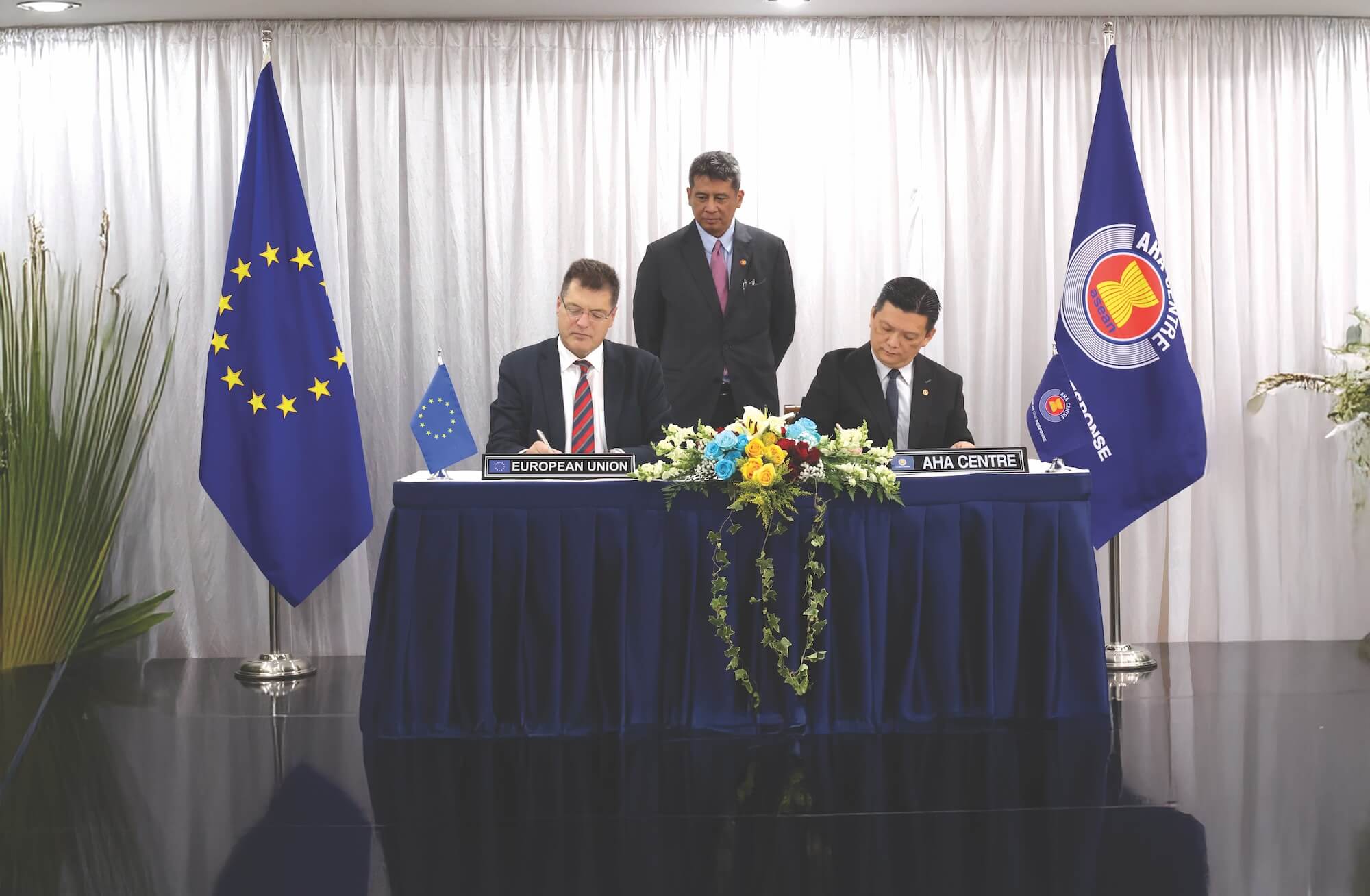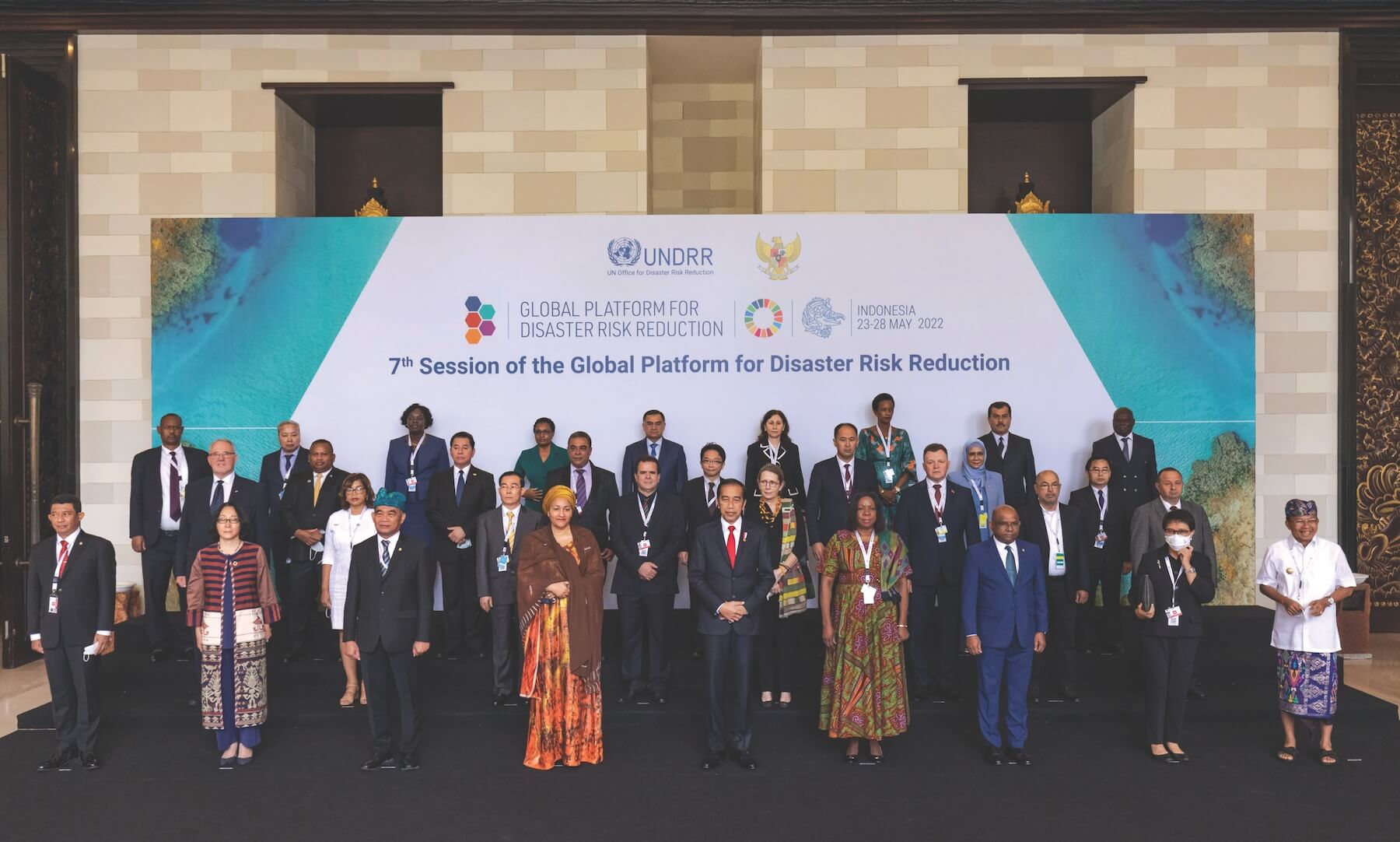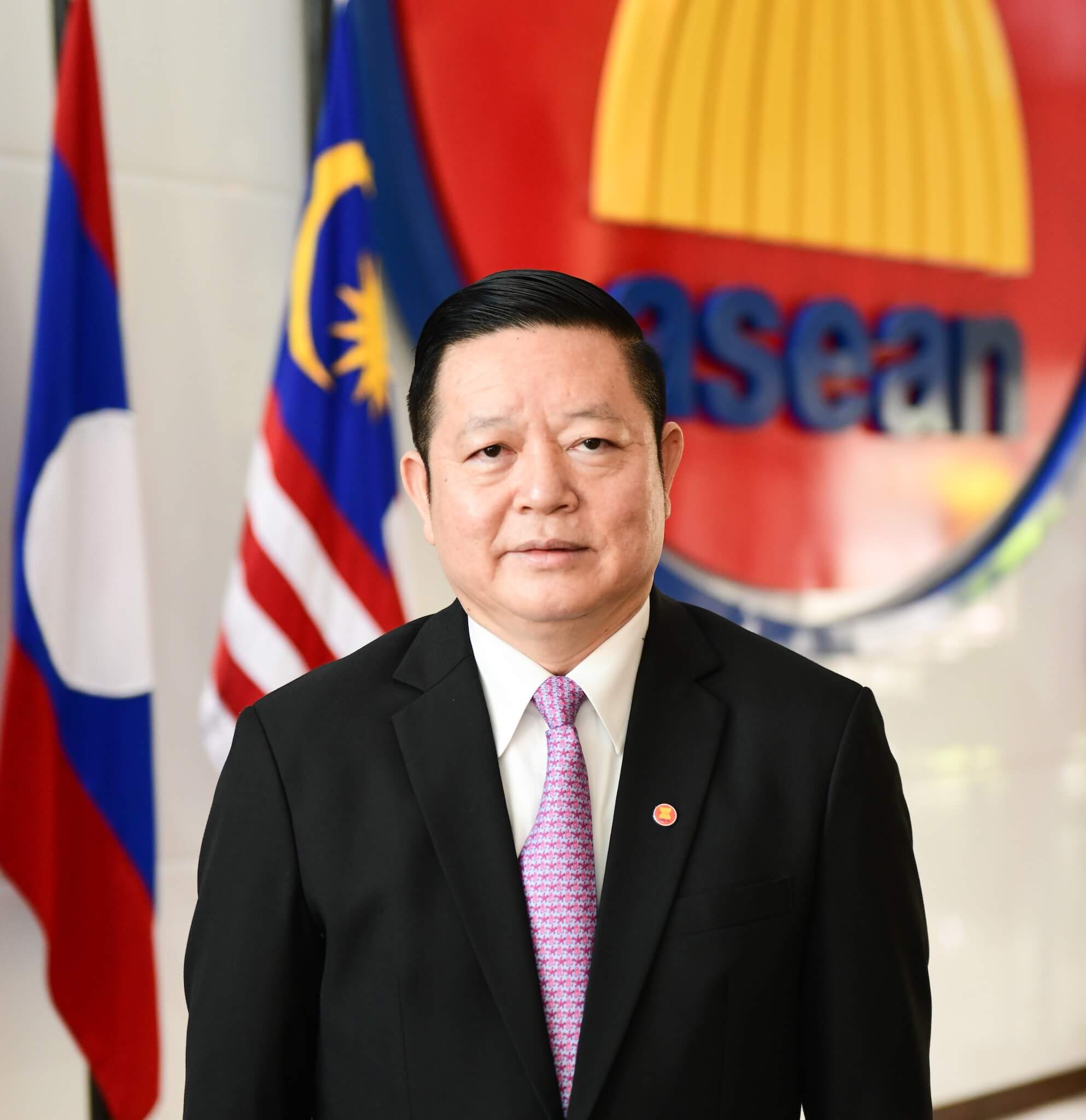



The ASEAN Health Sector immediately responded to the threat of a growing outbreak, as soon as it received the report from China, in early January, of unexplained pneumonia clusters in Wuhan. Existing national and regional mechanisms were activated to detect, prevent, and respond to the new coronavirus disease.
ASEAN, as a regional body, stepped up national responses and regional cooperation, complementing the World Health Organization (WHO) declaration of a COVID-19 pandemic on 11 March.
Globally, the numbers of cases are still increasing, with more than 210 countries affected, over 3 million confirmed cases, including about 216,000 deaths. Apart from China, countries in Europe and the Americas including other nations with weaker health systems are among the hardest hit by COVID-19.
WHO addressed the growing outbreak affecting China and nearby countries and first declared it a Public Health Emergency of International Concern on 30 January 2020. Prior to this declaration, six ASEAN Member States had already confirmed their first cases. By late March, all 10 Member States of ASEAN had been affected by the pandemic, as declared by WHO on 11 March 2020.
The epidemic curve produced by the ASEAN BioDiaspora Virtual Center below shows the increasing number of confirmed cases in the 10 ASEAN Member States since the outbreak began. The latest figures shown are as of 26 April 2020.
As each ASEAN Member State confirmed its first case, national prevention and control strategies were launched to initially contain the outbreak. These included public health measures on preparedness, prevention, control, detection, and response including public health advisories such as the promotion of frequent hand washing, appropriate use of masks, proper way of coughing and sneezing, and other ways of personal hygiene and sanitation.
To help flatten the curve, various non-health measures were strictly implemented and ranged from travel restrictions, strict social distancing, community quarantines to lockdowns. Other counter health measures revolved around strengthening testing, contact tracing, diagnostics, and treatment.
As measures were being implemented, challenges to the response became apparent. The surge of infections began overwhelming health systems, hospitals, and frontline healthcare workers, many of whom also contracted the disease. Nations have been grappling with insufficient medical supplies, testing kits and personal protective equipment (PPE).
Given the nature of the new coronavirus, innumerable data and information gaps were identified. Most critical were on how to appropriately and effectively prevent, detect, and respond to the spread of the disease; and how cases should be managed both in public health and clinical-health settings.
Regional health mechanisms were activated promptly to support national measures and to respond to the gaps as well as promote knowledge and information exchange in a timely manner.
The region and the world are now reeling from the pandemic’s negative impact, on economies and people’s livelihoods. This has necessitated a whole-of-government and multi-sectoral approach for each nation affected by COVID-19. In ASEAN, the pandemic has forged stronger regional cooperation and coordination among its Member States and partners.
The Initial Response to COVID-19: A Timeline of Regional Interventions
There has been a sense of urgency in addressing the growing crisis by showing the early and sustained regional response of the ASEAN Health Sector and Dialogue Partners, with the support of ASEAN Secretariat, as well as the interventions of non-health sectors, to address COVID-19.
This timeline presents an overview of the events that occurred in reaction to the initial disease outbreaks in China, Japan, Republic of Korea and ASEAN Member States.
The ASEAN Health Sector has put emphasis on understanding the technical nature of the new coronavirus and how to adequately address this based on the experiences of the ASEAN Plus Three Countries: China, Republic of Korea, and Japan.
ASEAN Health Sector Mechanisms to Address COVID-19 and Public Health Emergencies
Responding to all hazards and emerging public health threats has always been a top priority of the ASEAN Health Sector. At the 14th ASEAN Health Ministers Meeting (AHMM) in August 2019, the 10 Member States declared their commitment to cooperate and implement activities that will help the region prepare and respond to public health emergencies.
In the Joint Statement of the 14th AHMM, the ASEAN Health Ministers reiterated their commitment to the effective cooperation and implementation of ongoing activities for the preparedness, prevention, detection and response to communicable, emerging and re-emerging diseases including pandemics and neglected tropical diseases, and other public health emergencies or health impact of disasters, and health security threats.
This thrust is elaborated in the ASEAN Post-2015 Health Development Agenda (APHDA). Under the APHDA Governance Implementation Mechanism, four ASEAN Health Clusters were created in 2016 to address a wide range of health-related issues in the region. One of them is ASEAN Health Cluster 2 on Responding to All Hazards and Emerging Threats. With funding support from the Global Affairs Canada, significant progress has been made by ASEAN Health Cluster 2, through its work programme initiatives and mechanisms, to strengthen regional cooperation in disease surveillance, biosafety, biosecurity and laboratory preparedness, risk assessment and risk communication, and public health emergency preparedness. The regional mechanisms which support these areas were activated, tested and are continuously improved to support national and regional measures that address the pandemic.
In providing support to the overall ASEAN Health Sector response to COVID-19, regional mechanisms’ operating ambit of the ASEAN Health Sector play vital and complementary roles.
Since the COVID-19 outbreak began, Member States and their partners have been receiving daily updates and technical exchanges on COVID-19 from the ASEAN Emergency Operations Centre Network for public health emergencies (ASEAN EOC Network) as hosted by Malaysia and supported by the ASEAN Secretariat. The ASEAN EOC Network provides regional surveillance, early warning and sharing of information, and facilitates timely and accurate exchange among SOMHD focal points and partners engaged within the ASEAN Health Sector Cooperation on COVID-19 and response. This is complemented by the rapid sharing of real-time information through appropriate and widely-used mobile application. To inform the public, the ASEAN EOC Network also produced a compilation of national/ local hotline/call centres in ASEAN Member States for COVID-19 which was uploaded in the ASEAN website and posted through ASEAN social media platforms. A compilation of dedicated COVID-19 webpages of Ministries of Health was also produced and uploaded onto the ASEAN website.
The ASEAN BioDiaspora Virtual Centre (ABVC), which is hosted by Philippines, uses big data analytics to produce risk assessment and disease surveillance reports on COVID-19. Its first report was released on 20 January 2020 and has since been published online thrice a week. The ASEAN BioDiaspora programme is real-time and a web-based risk assessment tool that is able to link multiple datasets to show the potential spread of disease and how to manage the risk of importing and exporting the disease. The objective is to build regional capacity in data analytics, visualisation, and communication to strengthen ASEAN’s epidemic and pandemic preparedness and response capabilities that are either naturally occurring or man-made biological threats.
Explorer and Insights are two of the real-time and web-based tools used by the ABVC. Explorer illustrates how diseases move around the world using information on air travel, demographics, human population density, and other relevant datasets. The tool can help public health agencies detect local transmissions and determine factors that drive the disease around. The Insights tool provides healthcare organisations additional insights on how to manage the risk of disease importation and exportation. This information was vital in the early stages of the outbreak, as ABVC tracked how the virus was exported from ground zero in Wuhan, China to the ASEAN region.
Through the Regional Public Health Laboratories Network (RPHL), under the Global Health Security Agenda led by Thailand, ASEAN Member States are able to access exchanges on laboratory readiness, technical and material support, as well as experience in laboratory surveillance.
As measures against the outbreak intensified, so did the public’s fear and uncertainty about COVID-19. Information and misinformation about COVID-19, its mode of transmission and virulence, f looded both traditional and social media. The ASEAN Risk Assessment and Risk Communication Centre (ARARC) contributes to addressing these as it recognises that risk communication is essential in managing public health emergencies. National governments have also benefitted from programmes of ARARC, as ASEAN officials are continuously addressing the challenges of disputing fake news and hoaxes related to COVID-19, and finding ways to effectively reach and provide the public with credible and timely information.
To support these mechanisms and provide visibility to the sector, the ASEAN Secretariat has created a dedicated webpage on the ASEAN website to keep the public abreast on the ASEAN Health Sector efforts related to the prevention, detection, and response to COVID-19. It is an information hub for regional health interventions on the pandemic which contains press releases, risk assessment reports, and relevant links and references. Information including the compilation of national/local hotline/ call centres in ASEAN Member States for COVID-19 and compilation of dedicated COVID-19 webpages of Ministries of Health by the ASEAN EOC Network and the risk assessment and disease surveillance reports of the ABVC can be accessed through https://asean.org/?static_post=updatesasean-health-sector-efforts-combat-novelcoronavirus-covid-19
To Move as One: The Fight Ahead
Southeast Asia has always been a hotspot for the emergence of new infectious diseases. The region was hit hard by previous epidemics like SARS, Avian Flu, and the H1N1 Influenza virus. COVID-19, as WHO declared, is the first pandemic caused by a coronavirus. The ASEAN Health Sector’s response to COVID-19 is staunchly supported by ASEAN Secretariat through the Health Division. In moving as one, the Health Division will continue to be a reliable partner of the ASEAN Health Sector together with the Dialogue and the Development partners in addressing COVID-19; and a stable liaison to the WHO as technical partner of the ASEAN Health Sector at the national and regional levels.
ASEAN political commitments have been made to substantially support and enhance the existing regional organisations, platforms, and mechanisms to adequately address the current pandemic and to prevent further damage to the socio-economic development of countries, while at the same time, adopt a pro-active stance to markedly prepare for the future outbreaks and pandemics based on the lessons being learned from COVID-19. The whole-of-government and whole-of-society approaches are essential to these interventions.
Though knowledge and information exchanges are nonstop, more needs to be understood about this new coronavirus. It calls for, among others, more immediate collaboration and coordination on the conduct of research and clinical trials on interventions, pharmaceuticals, and antiviral vaccine. In the near future and moving towards more structural and concrete approaches to capacitating the region in preventing and controlling future emerging and infectious diseases, an ASEAN Multi-Sectoral Pandemic Preparedness and Response Framework and the feasibility of establishing a Centre to address emerging and infectious diseases (EIDs) in the region are proposed.
The fight against this new contagion is still ongoing but this will be won with the forward-looking, integrated, inclusive, and resolute approach to action, coordination, and collaboration of ASEAN and its partners.








